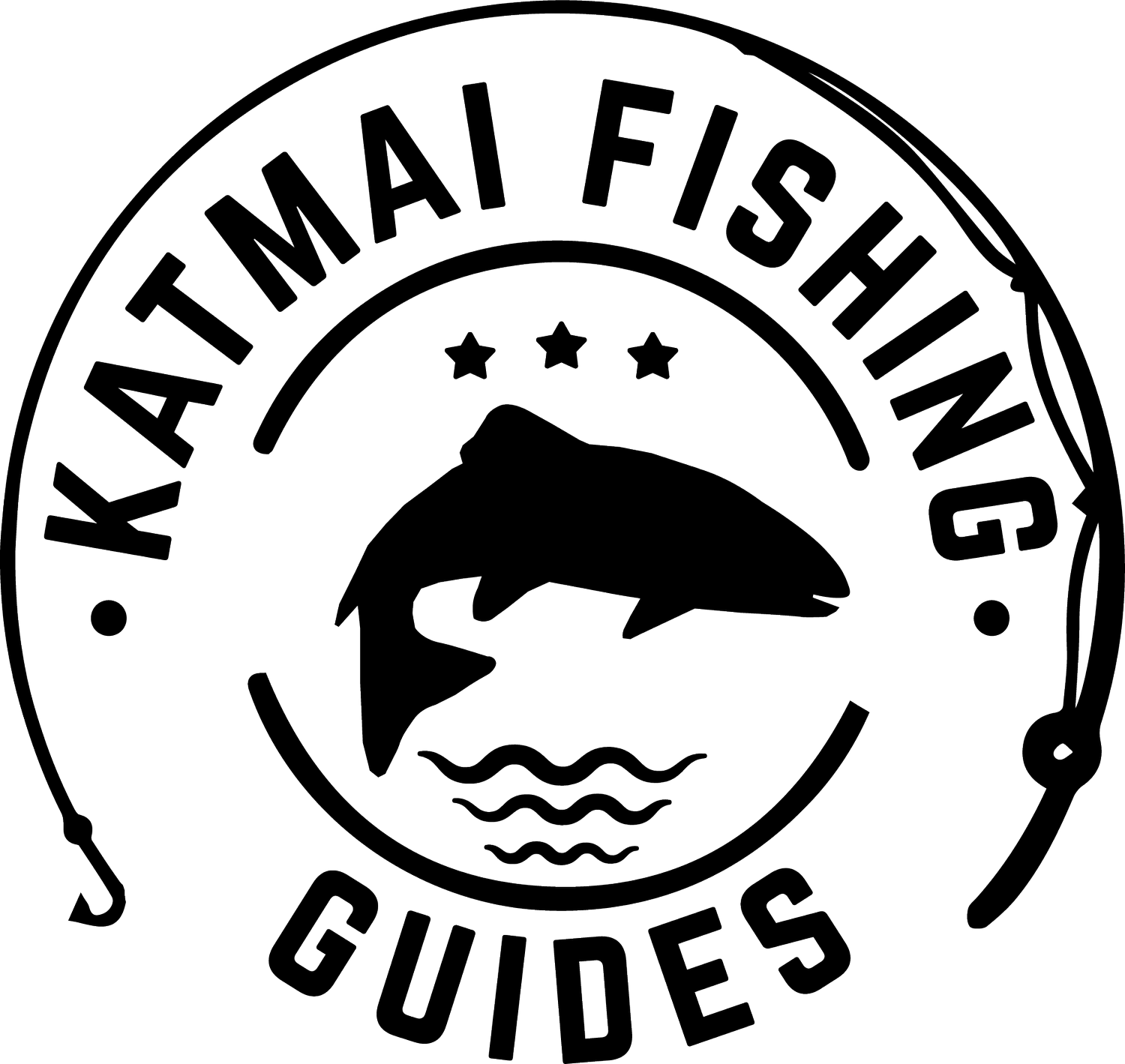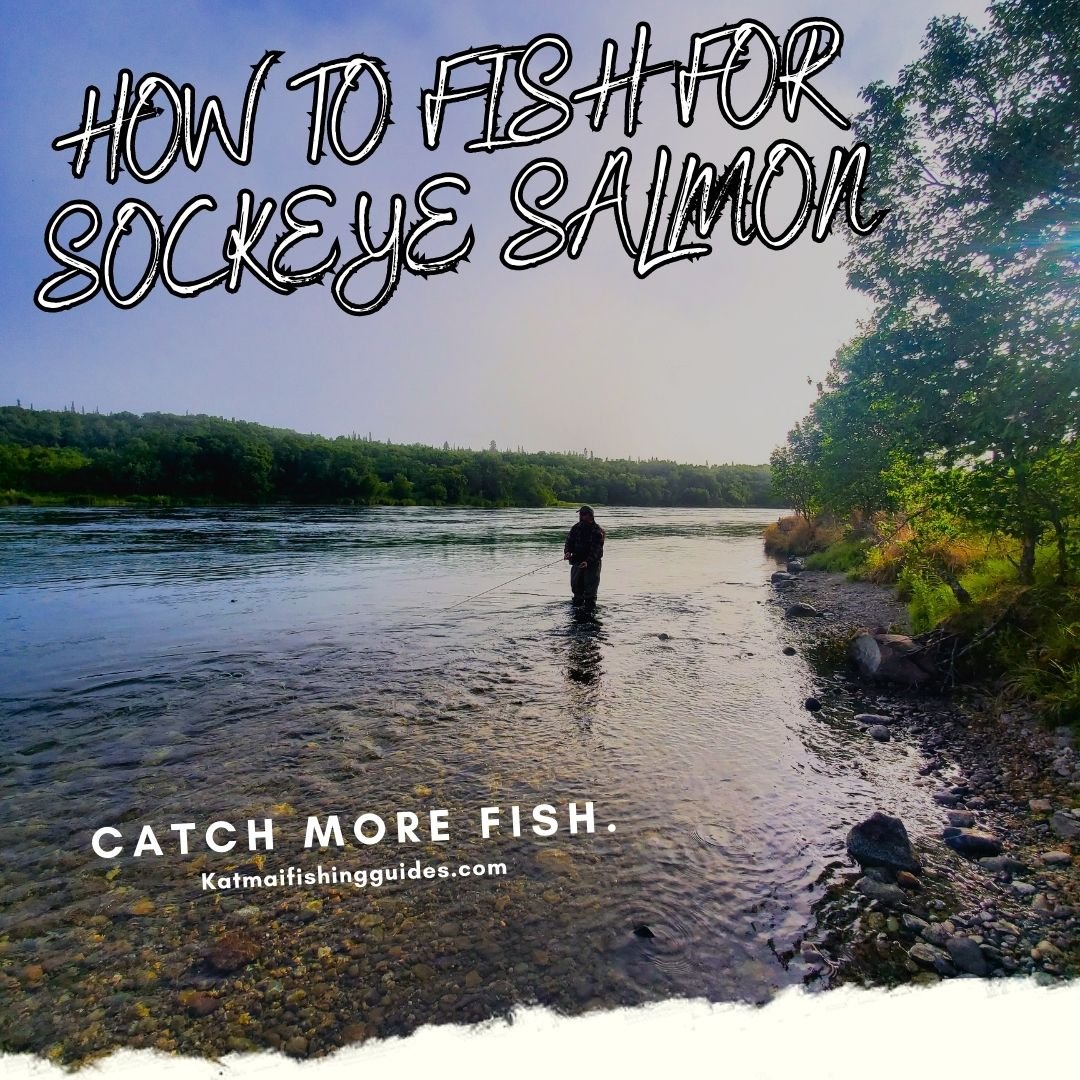A Complete Guide to Sockeye Salmon Fishing
Hi, I’m Steven!
I moved to the small Alaskan town of King Salmon in 2017 to pursue my dream of fishing and living in Alaska. I have been fishing and guiding in the Alaskan wilderness for ten years, guiding hundreds of clients each year to catch fish of a lifetime in all conditions.
Today I want to teach you a little about the technique we use to fish for sockeye! This technique is not specific to the Bristol Bay region, so even if you aren’t coming to fish with us, you can take this skill and use it all around Alaska, Canada, and anywhere you find sockeye swimming upstream!
If you're considering doing some fishing during the sockeye run, learning the flossing technique is a must! But don't worry; we have taught hundreds of fishermen and non-fishermen this simple technique!
In this comprehensive guide, brought to you by Katmai Fishing Guides, Alaska's leading salmon guide service, we will explore the nuances of flossing for sockeye salmon on the Naknek River in the heart of Bristol Bay. From selecting the perfect gear to essential tips and strategies, we'll equip you with the knowledge to maximize your chances of a successful sockeye fishing adventure.
Understanding the Flossing Technique
The flossing technique, also known as "flipping," involves positioning yourself in the river and allowing your line to drift downstream through the path of sockeye salmon swimming upstream. Unlike conventional fishing methods, flossing aims to hook these fish in the mouth, not by the fish biting the fly. Instead, it is by dragging the line thru their mouths and the sweeping motion created by the angler causes the hook to slide into the fish’s mouth; more on this later!
Choosing the Right Gear
lamiglas X-11 Fly rod
If you're planning on fishing for sockeye salmon, having the proper equipment is essential to ensure a successful and enjoyable experience. We highly recommend using a 7-9 weight fly rod as it provides the necessary strength and flexibility to handle the power of these fish. Our clients use Lamiglas X-11 fly rods, which have worked great to land lots of Sockeye! You do not need a high-end fly rod to catch sockeye. I recommend against it; due to the nature of the rig, casting technique, and strength of these fish, there is a possibility your rod could get broken.
In addition to a suitable fly rod, choosing a reel with a good drag and high line capacity is essential. A smooth drag system allows you to control the fish more effectively, reducing the risk of losing it during the fight. Sockeye salmon can jump back in the downstream current and make a run for it, so having a reel capable of controlling the fish is important.
When it comes to leaders, we recommend selecting a 15-30 lb. test leader. The higher weight rating ensures the leader is durable and can withstand the potential strain of battling these resilient fish. Additionally, the technique requires our leader to be swept across or near the bottom of the riverbed, which causes it to end up with nicks and abrasions that can result in a break-off when you do hook a fish, so a heavier pound-test line decreases the likelihood of break-offs during the hook set and fight.
The right equipment is key to a successful sockeye salmon flossing experience. By following these recommendations, you'll be well-equipped to handle the challenges that come with catching these fascinating fish.
Fly Selection
When flossing for sockeye salmon on any river selecting the right fly is pretty easy! When fishing for sockeye salmon with Katmai Fishing guides, we use Russian River flies; this pattern uses a single-point hook with less than a 1/2” hook gap (legal throughout Alaska). They are brightly colored flies so that they are visible to the Angler! Ultimately we want to see where our fly is in the water column; is it above, below, or drifting right through the Sockeye!
An adequate supply of flies with you is important because you will encounter snags, break-offs, and dull hooks! So make sure you have enough flies with you to catch your limit! When choosing flies, consider variations in color and size to match the river you are fishing, ensuring the fly is visible to you so you can make adjustments.
How to set up your Sockeye Rig
Now that you have all the supplies, I’ll show you how to set up the rig. First, you’ll need your leader material. You don’t need to buy expensive pre-made salmon leaders; buy a couple hundred yards of 15-30 Lb. Test and build your own leader using a perfection loop to attach to your fly line! You can learn here if you don’t know how to tie a perfection loop! (Essential Salmon Knots Guide coming soon.)
After you have built your leader and attached it to your fly line, tie on your favorite sockeye fly. We use a standard clinch knot to attach our sockeye flies.
Once your fly is attached, your will want to use a weight to help the fly sink as you sweep it across the current; how much weight will depend on your river depth and current speed. We usually use 1 or 2 size #4 removable split shot. Position the split shot approximately 12-18 inches up from the fly, make a couple of test casts, and then adjust your weight, sweep speed, or weight distance from the fly to find the sweet spot.
My friend Patrick with a Naknek River Sockeye!
Finding Prime Fishing Locations
During the peak sockeye run in July, the Naknek River in Katmai becomes an angler's paradise. Sockeye tend to run shallow and close to the river bank. Each river is different, but no matter where you fish, spending some time observing from the bank should allow you to start to see the fish as they move upriver! Identifying prime fishing locations is key to success.
Flossing doesn’t work well with fish that are stationary and in slow or uneven currents! We want to look for a steady current that isn’t too deep and has fish moving thru it!
Putting it all together to catch some fish!
Limits of Sockeye on the Naknek river!
Flossing for sockeye salmon demands a combination of consistency, skill, and some luck!
a) Rigging your sockeye rig: If this spot is new to you, I would recommend starting with one piece of split shot about 18 inches up from your fly, making a few casts feeling for the bottom, and then adjusting your rig. If you aren’t feeling the river bottom, slide your weight down to 14-12 inches from your fly, slowing down your sweep or adding some weight. If you are snagging immediately, consider speeding up your sweep or moving your split shot further up your leader. You don’t want to move too far past 24 inches, though.
b) Positioning: Stand in the River with your body angled slightly upstream. Cast your line out across the current. Then allow it to drift downstream, maintaining controlled line tension by sweeping towards the bank downriver of you. If you have found a good spot near the bank, the cast should only be 10-20 feet of line total.
c) Controlled Drift: We want to keep constant tension on the line; we don’t want slack. As you sweep back towards the bank downriver from where you are standing, you should feel these little “tick, tick ticks” in your fly rod; this is your weight tapping the riverbed. There is another sensation you should feel thru the rod and it is more of a thump and those will be the fish, anytime you feel that sensation you should accelerate your sweep to set the hook!
d) Hook-Set: When you feel a fish, you need to pull hard towards the bank while keeping your rod tip low to the water’s surface. This will quickly set the hook in the fish’s mouth, and you’ll know if it worked. From the hook set to the net, the most important thing you can do is keep tension on the line; the fish will likely try to relieve pressure your number one priority should be to maintain that pressure until you land the fish!
About the Author
Steven J. Benjamin is a highly regarded, Fishing guide, USCG Capitan, Save Bristol Bay Guide Ambassador, Fly Fishing Instructor, and Rainbow trout and Arctic grayling record holder. He has successfully guided guests from around the world, helping them catch wild salmon & trophy Rainbow trout. Together with his wife Tiara, all of their guests’ expectations are met.






